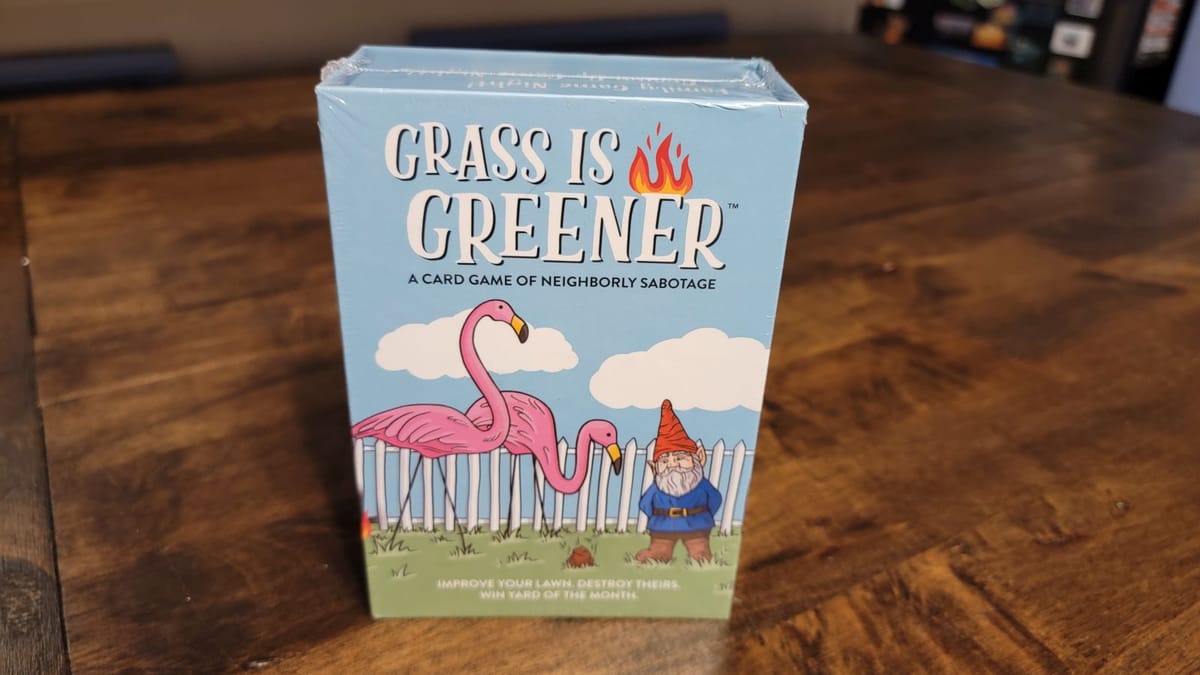
Grass is Greener is a fast-paced card game where two to four players compete to win the coveted Yard of the Month crown from their local HOA. The premise is simple: to win you must sabotage your neighbors’ yards while simultaneously enhancing yours, all while catering your new yard decor to suit HOA member’s tastes. Grass is Greener is often funny and sports just enough strategic elements to prevent playthroughs from becoming stale, creating a fun night of pitting friends against each other in not-so-friendly competition.
Set up and play is simple, with each player beginning with three land plots, indicated by sod cards, upon which they will build out their yard. A deck of 142 cards, containing improvements, impairments, petty schemes, garage bonuses, and plot upgrades, is then shuffled and five cards are given to each player. The remaining deck is then placed on the table and three cards are lined up and serve as a community deck visible to all players. An HOA card is then drawn at random. Each HOA card features an HOA member and explains what they look for in a yard. Building your yard out to suit an HOA member’s taste will grant additional bonus points at the end of the game.
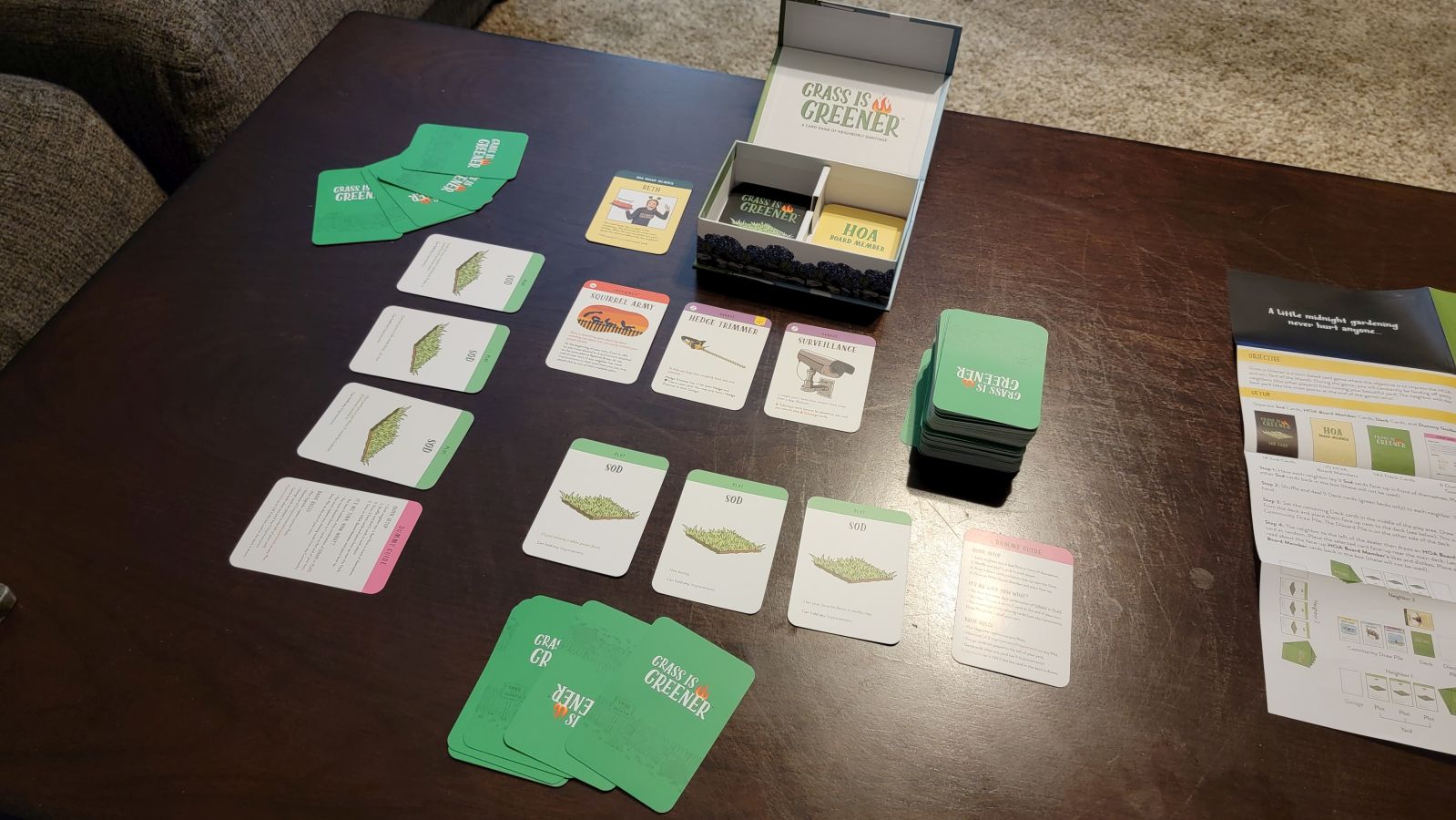
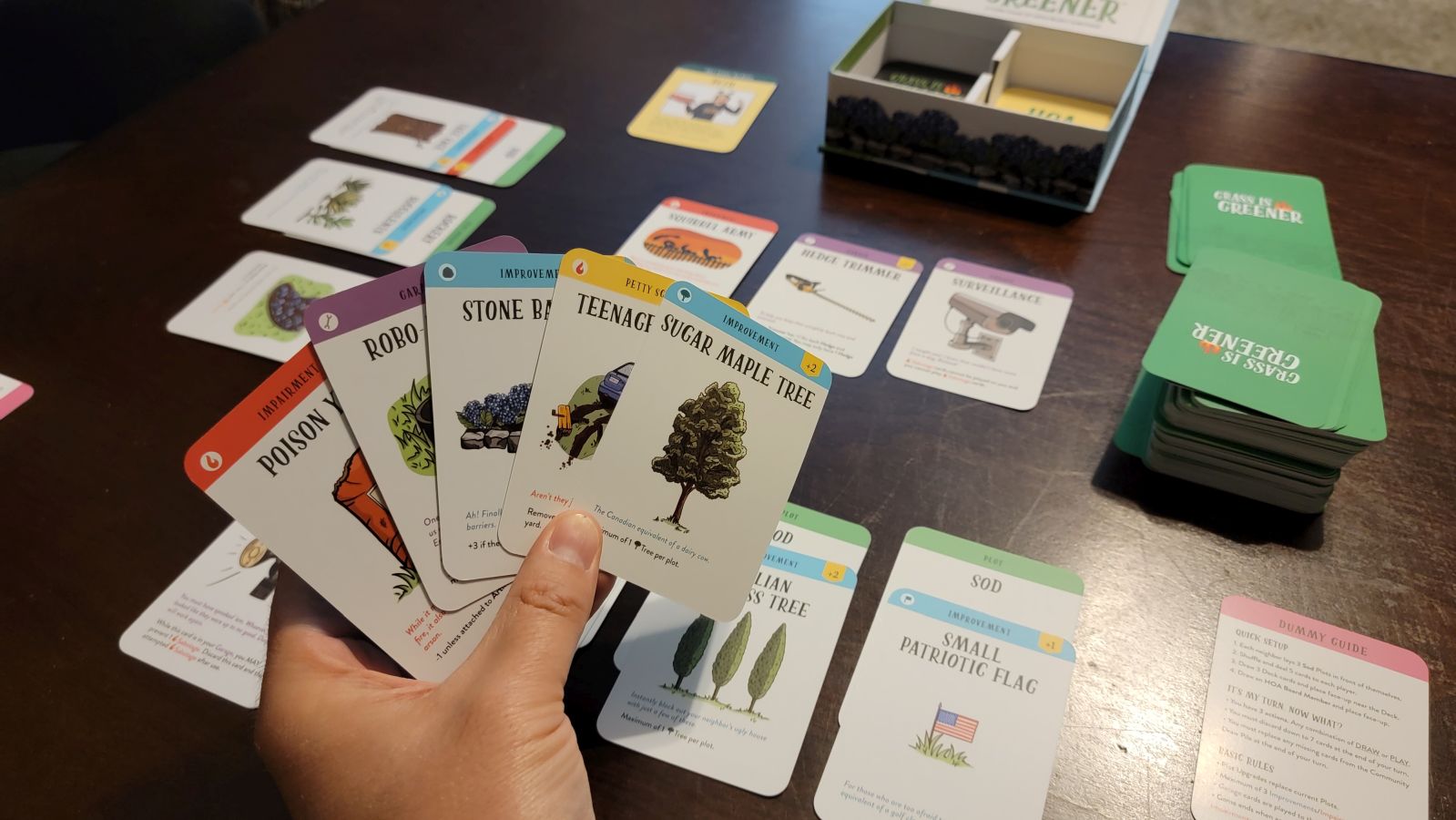
The three land plots serve as the playing field, with each of the three plots able to be filled with a maximum of three plot elements, be it an improvement or an impairment. Improvements enhance the yard and grant points, while impairments are often placed on your yard by other players to devalue your yard. Once placed, both improvements and impairments are permanent aside from drawing a card that allows you to remove it. Further adding to the complexity is card subtypes, which grant bonuses when you use specific cards together – say using a tree improvement and a bird house improvement – or grant additional points based on an HOA member’s likes, such as an HOA member who likes improvements which fall under the “tacky” category.
During each turn, a player can either draw a card or play a card in their hand, but each player must perform three actions. If a player chooses to draw a card, then they can either take a card from the community deck or take the card from the top of the main deck. Players cannot hold more than 7 cards at a time. If a player chooses to play a card, then they will choose a card from their deck and complete the selected action that the card details. This may be an improvement to place on one of their three plots, an impairment to place on a neighbor’s plot, or a petty scheme, which allows them to perform hurtful acts on their neighbors, such as taking a neighbor’s entire hand or removing all improvements on one of the neighbor’s land plots. Additional cards include plot upgrades which allows you to switch your plain sod plot to artificial turf or a mulch bed and garage cards which grant bonuses such as preventing a neighbor from placing an impairment on your yard.
Play then continues until a player reaches nine improvements or impairments on their yard, a total of 3 on top of each land plot. When the 9-card limit is reached, play immediately stops for all players and scores are tallied.
Grass is Greener should only take a few minutes for players to grasp the game’s mechanics, and from there gameplay will occur quickly. The cards are often funny, making fun of traditional yard décor, and one upping your neighbors with ridiculous impairments or petty schemes is ridiculously fun and injects a friendly rivalry to the proceedings, which often leads to hilarious banter between players. On average, a game will only last 15 to 20 minutes, but thankfully Grass is Greener remains fun to play multiple times as the cards, HOA members, and petty schemes are random enough to keep the game unpredictable.
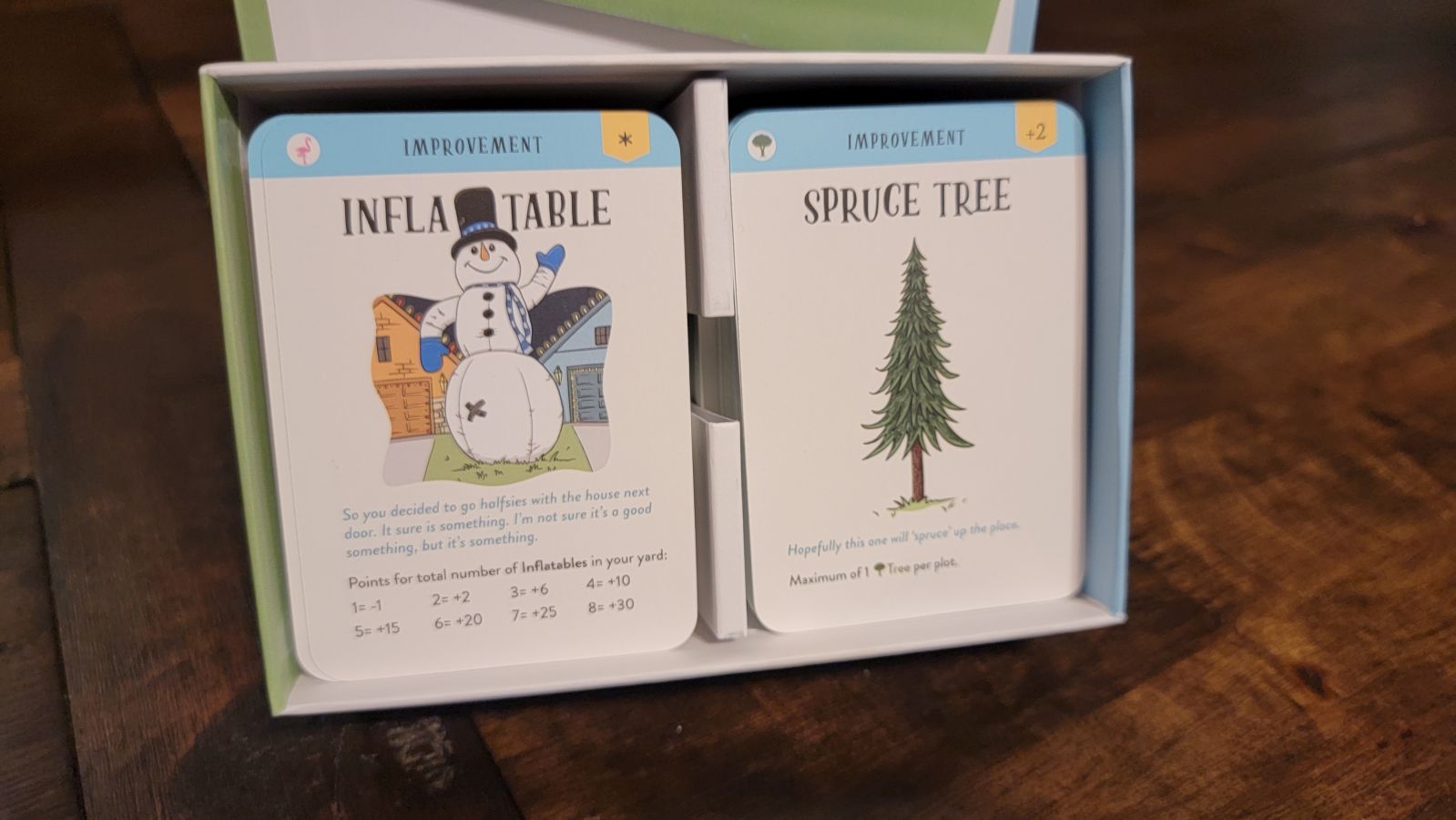
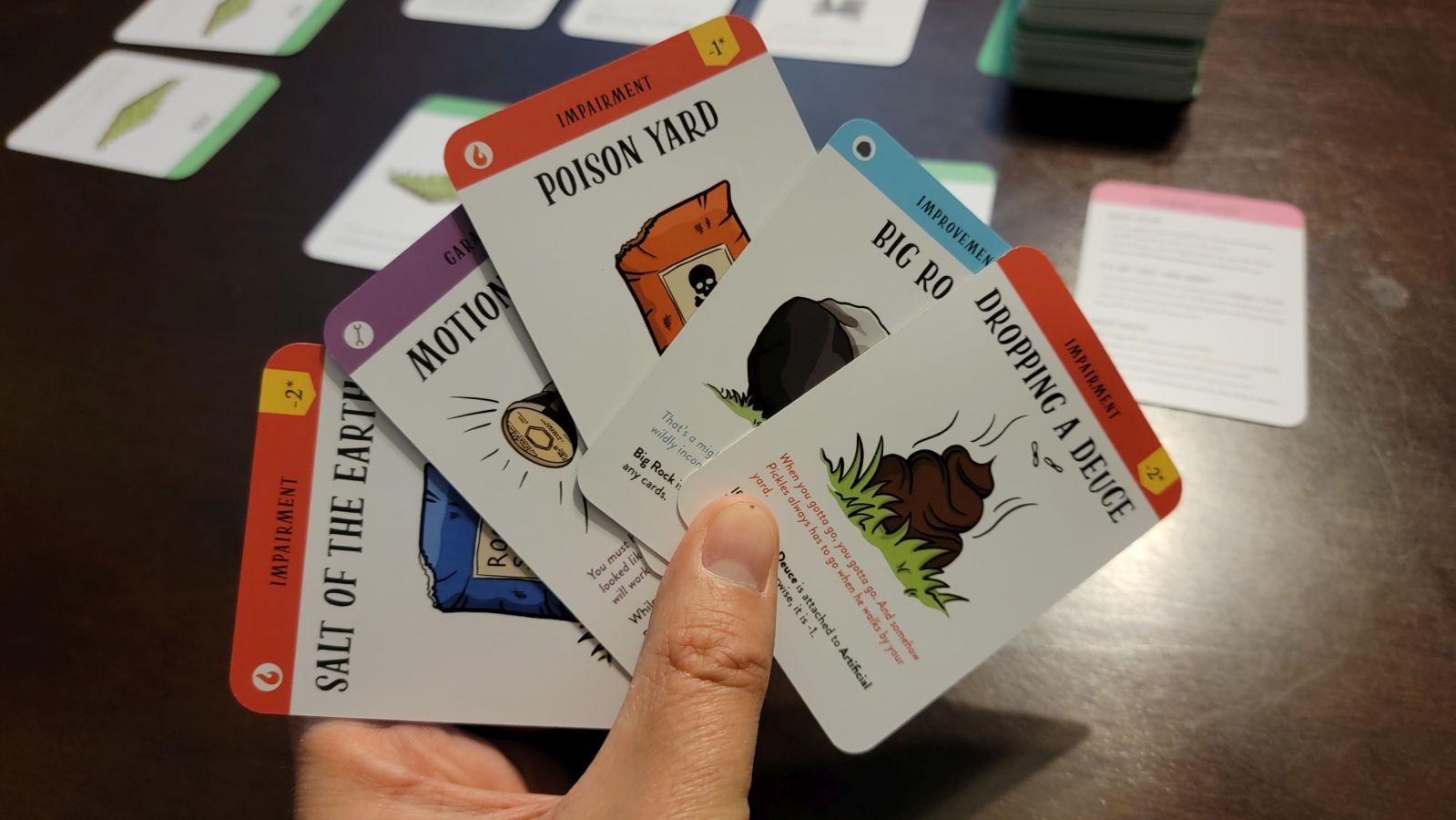
While initial playthroughs will most likely see players throwing down improvements at random, more strategic elements reveal themselves as play progresses. Players quickly learn that just because they have an improvement, they do not need to use it. With only 9 plot spaces available, and with improvements and impairments being permanent, players must try their best to find improvements which add bonuses when placed together and which satisfy HOA members. This is further complicated by the stress of wanting to find the perfect décor, but also worrying another player will hit their 9-card limit, thereby initiating the end of the game scoring. These seemingly small, but important, aspects help Grass is Greener stand out as more than a basic card game while remaining accessible to new players.
Further helping Grass is Greener stand out is its superb production quality. From the thick magnetic cardboard case to the thin yet durable matte card stock, overall quality is surprisingly nice for a game in this price range. The most significant highlight is the wonderfully detailed and wildly entertaining drawings which adorn each card. From tacky flamingos and mailboxes, to wrecked shopping carts, inflatables, and smelly piles of poo, you’ll catch yourself laughing at the drawings just as often as you’ll be laughing at the gameplay.
Grass is Greener
Great
Grass is Greener is a fast-paced, often hilarious game based around friendly rivalry between players. Ruining your neighbor’s yard with impairments and enacting petty schemes is ridiculously fun, while attempting to create a high-value yard by finding the perfect improvements provides just enough strategic elements to keep the game enjoyable through multiple playthroughs. Grass is Greener is the perfect game for a night in with friends.
Pros
- Friendly rivalry between players keeps the game exciting
- Cards are often funny and well drawn
- Strategic enough for multiple playthroughs
Cons
- Having only 9-plot spaces leads to some games ending quickly
